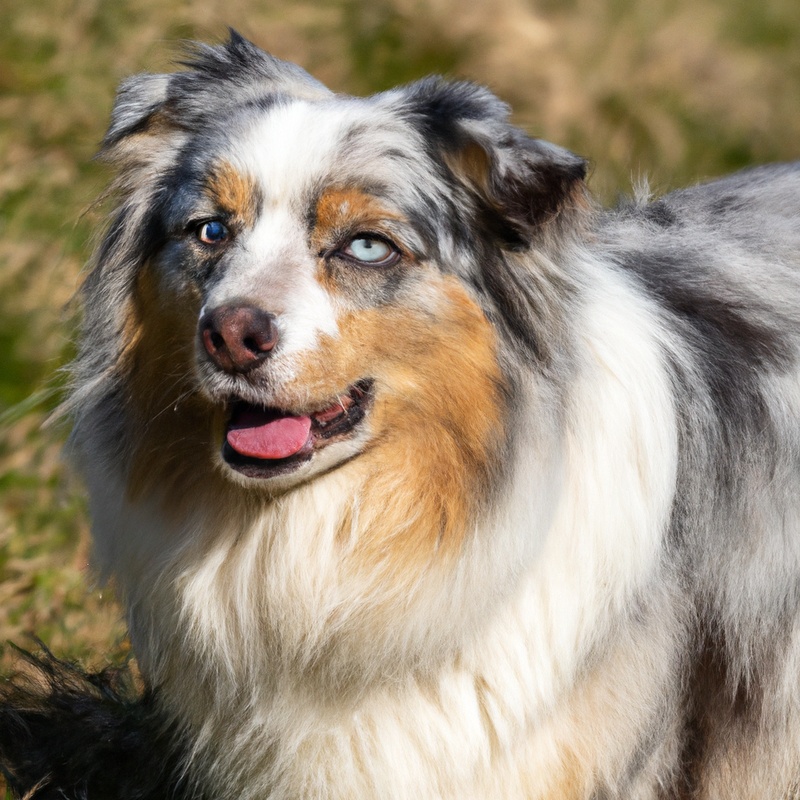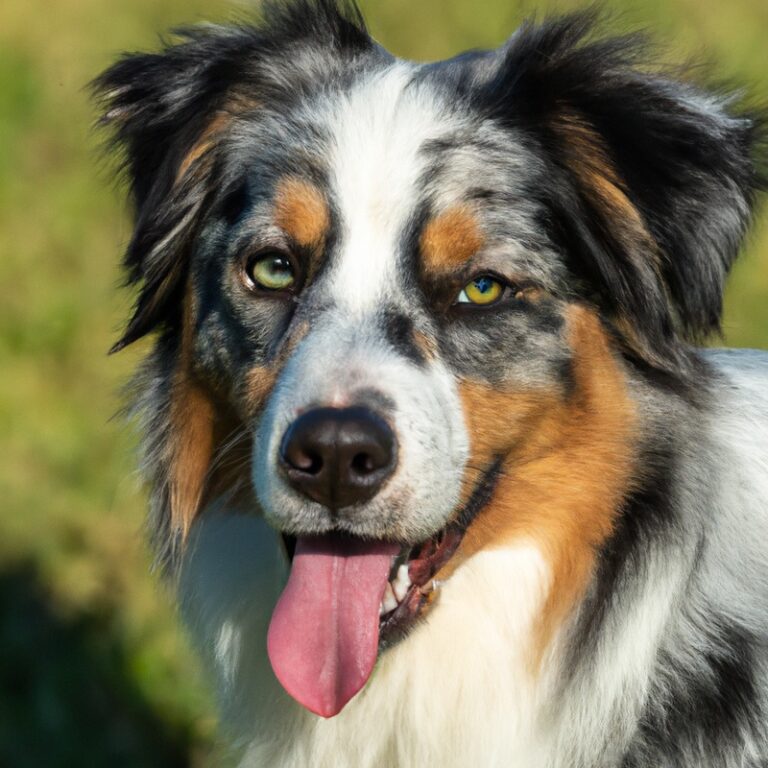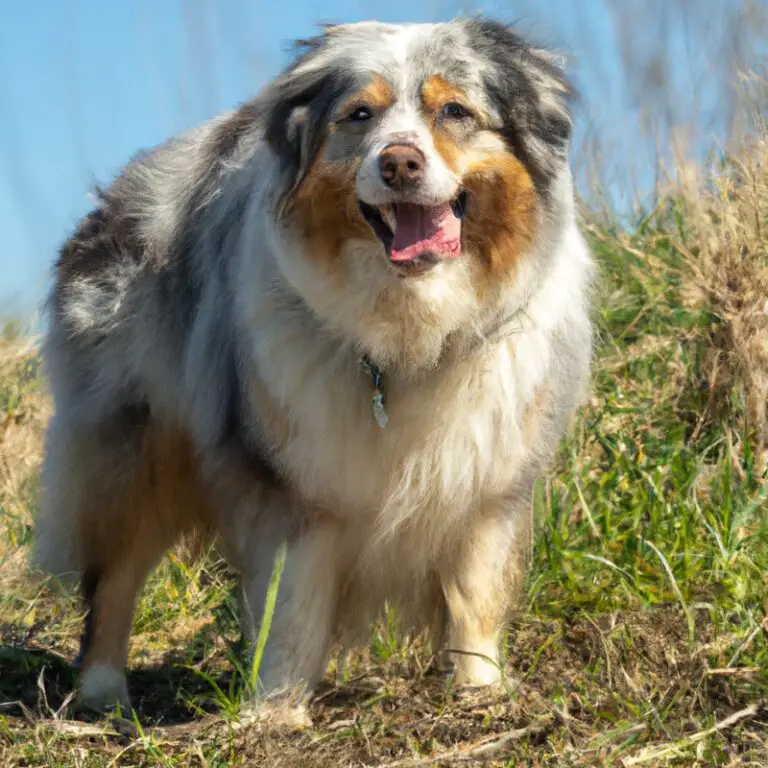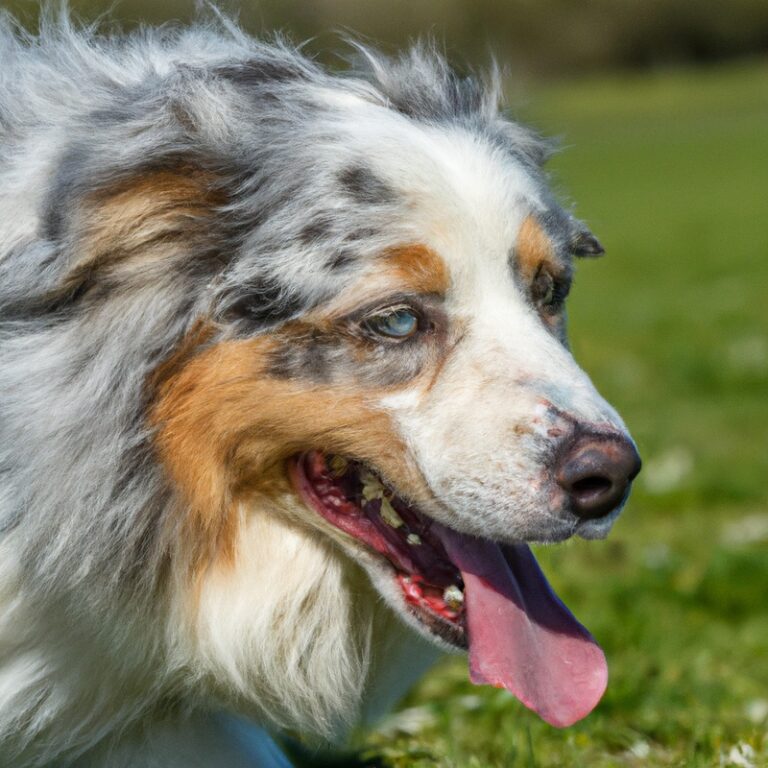Can Australian Shepherds Be Trained To Be Successful In Flyball Races?
Key Takeaways:
- Australian Shepherds can be trained to excel in flyball races.
- They possess the necessary traits for success in this sport.
- Consistent training and positive reinforcement are key to their performance.
- Their intelligence and agility make them well-suited for flyball races.
Are you looking for the perfect four-legged athlete to compete in the thrilling world of flyball races? Well, look no further than the energetic and agile Australian Shepherd.
These remarkable dogs possess all the qualities needed for success in this exciting dog sport.
As an expert in canine training and a proud Australian Shepherd owner myself, I can confidently tell you that these intelligent and driven dogs have what it takes to excel in flyball races. In this article, we will explore the characteristics of Australian Shepherds, their suitability for flyball, effective training strategies, common challenges, and pro tips to ensure success on the flyball field.
Get ready to unleash the competitive spirit in your Australian Shepherd and turn them into a true flyball champion.
| Criteria | Can Australian Shepherds be trained to be successful in flyball races? |
|---|---|
| Intelligence | Yes, Australian Shepherds are highly intelligent and trainable dogs. |
| Agility | Australian Shepherds are known for their agility and athleticism, making them well-suited for flyball races. |
| Focus | Australian Shepherds have a natural herding instinct and are generally *focused*, which can be beneficial in flyball training. |
| Drive | Australian Shepherds often have a strong drive to work and please their handlers, which can be channeled into excelling in flyball races. |
| Energetic | Flyball races require high energy and Australian Shepherds are generally energetic dogs, making them a good fit for this sport. |
| Training | With proper training and positive reinforcement techniques, Australian Shepherds can be trained to excel in flyball races. |
| Cooperation | Australian Shepherds generally have a cooperative nature and are willing to work with their handlers, which can make training for flyball races more successful. |
| Health | Good health and physical fitness are important for flyball races. Australian Shepherds should be in good overall health to participate successfully. |
What is flyball?
Overview of flyball as a dog sport
Flyball is an exciting and fast-paced dog sport that involves teams of dogs racing against each other. The goal is for each dog to jump over a series of hurdles, retrieve a tennis ball from a spring-loaded box, and then race back to their handler.
It’s a relay race, and the team that finishes with all four dogs completing the course first wins.
This sport is a favorite among dog enthusiasts because it combines elements of agility, speed, and teamwork. It is not only a great way to provide mental and physical stimulation for dogs but also a wonderful opportunity for bonding and socialization with other dogs and handlers.
The sport of flyball is suitable for dogs of all breeds and sizes, as long as they have the energy, drive, and willingness to learn.
While certain breeds may have natural advantages in terms of speed and agility, with proper training and dedication, any dog can participate and enjoy flyball. Flyball is not only a thrilling sport to watch but also a rewarding activity for dogs and their handlers.
It fosters teamwork, improves obedience and focus, and provides an outlet for their natural instincts and abilities.
So, if you’re looking for an engaging and fun sport to participate in with your furry friend, consider giving flyball a try!
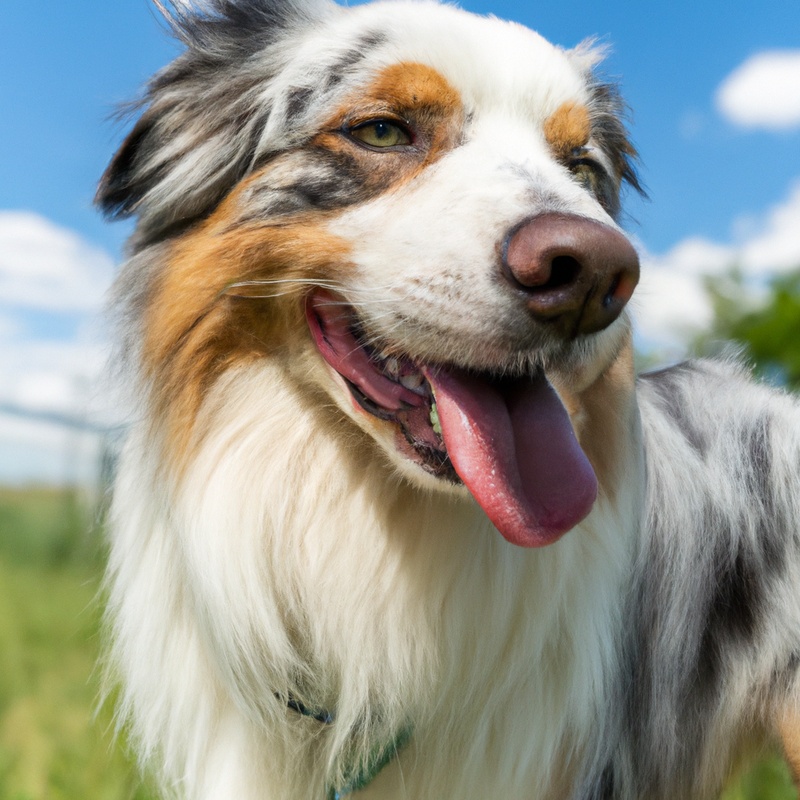
Flyball rules and equipment
Flyball is a fast-paced and exciting dog sport that requires teams of dogs to race against each other, alternating between running and jumping hurdles to retrieve a tennis ball from a box and return it to their handler. Here are some key rules and equipment used in flyball races:
- Each team is made up of four dogs and a handler for each dog.
- The race is conducted in a relay format, with two teams racing side by side.
- The course consists of four hurdles spaced 10 feet apart, a flyball box, and a start/finish line.
- Dogs must jump over the hurdles in sequence and trigger the flyball box to release the ball by pressing it with their paws.
- The ball must be caught and returned by the dog before the next dog on their team can start their run.
- A perfect run is achieved when all four dogs complete the course without any errors or faults.
- The team with the fastest time wins the race.
As for equipment, here’s what you’ll need:
- Hurdles: Adjustable hurdles that can be set at various heights to suit different dogs.
- Flyball Box: A specially designed box that holds the tennis balls and releases them when triggered by the dog’s paw.
- Tennis Balls: Lightweight and durable balls that are easy for dogs to grip and carry.
- Start/Finish Line: A clearly marked line to indicate the beginning and end of the course.
- Safety Gear: Dogs should wear properly fitted harnesses or collars and be leash-free during the race for safety.
Understanding the rules and having the right equipment is essential for participating in flyball races. Practice and training will help you and your Australian Shepherd excel in this thrilling dog sport.

Are Australian Shepherds suitable for flyball races?
Characteristics of Australian Shepherds
Australian Shepherds have several characteristics that make them well-suited for flyball races. They are known for their high energy levels and drive, which are important qualities for success in this sport.
Additionally, Australian Shepherds are highly athletic and agile, allowing them to maneuver quickly and efficiently through the flyball course.
These dogs are intelligent and trainable, making it easier to teach them the necessary skills for flyball. Their herding instincts also contribute to their ability to excel in this fast-paced and competitive sport.

Australian Shepherds’ energy and drive
Australian Shepherds are known for their high levels of energy and drive. They are a herding breed, originally bred to work on ranches and farms, and their energy reflects their working background.
Australian Shepherds have a natural instinct to be active and keep busy.
This makes them well-suited for activities that require physical and mental stimulation, such as flyball races. Their energy and drive make Australian Shepherds eager and enthusiastic participants in flyball races.
They have the stamina and endurance to compete in fast-paced events and can excel in the sport.
Their natural athleticism and agility further contribute to their success in flyball. It is important to channel their energy and drive in a positive way, and flyball is a great outlet for them.
Engaging them in activities that stimulate their minds and challenge them physically helps to prevent boredom and any potential destructive behaviors that may arise from their high energy levels.
Overall, Australian Shepherds’ energy and drive make them excellent candidates for flyball races. They thrive in an active and stimulating environment, and participating in flyball allows them to showcase their natural abilities while having fun.
Australian Shepherds’ athleticism and agility
Australian Shepherds are highly athletic and agile dogs. They possess a natural grace and agility that makes them well-suited for flyball races.
These dogs are known for their speed, quick reflexes, and powerful muscular build.
Their athleticism allows them to navigate the flyball course and perform the required jumps and sprints with ease. Australian Shepherds are also incredibly agile, which means they can change direction quickly and navigate obstacles without any issues.
Their physical capabilities make them ideal candidates for flyball races, as they can compete at high speeds and excel in this fast-paced dog sport.
Training Australian Shepherds for flyball
Basic obedience training for flyball
Basic obedience training is essential for Australian Shepherds who are being trained for flyball. This includes teaching them commands like sit, stay, come, and heel.
These commands will help them listen to their handler during races and stay focused on the task at hand.
It’s important to practice these commands regularly and gradually increase the level of distractions to ensure your Australian Shepherd remains obedient in high-energy flyball environments. Being consistent, patient, and using positive reinforcement techniques will greatly enhance your dog’s obedience skills for successful flyball races.
Building speed and focus in Australian Shepherds
When it comes to building speed and focus in Australian Shepherds for flyball races, there are a few key strategies that can help. Firstly, incorporating regular exercise and playtime into their routine will help them develop the physical stamina needed for speed.
This can include activities like running, fetching, and agility training.
Secondly, using positive reinforcement techniques during training sessions will help to keep their focus and motivation high. This can involve using rewards such as treats or praise when they exhibit the desired behavior.
Lastly, consistency in training is crucial for building speed and focus.
By avoiding mixed messages and sticking to a regular training schedule, your Australian Shepherd will be well on their way to success in flyball races. So remember, regular exercise, positive reinforcement, and consistency are key when building speed and focus in Australian Shepherds.
Teaching Australian Shepherds the flyball box turn
When it comes to teaching Australian Shepherds the flyball box turn, consistency and positive reinforcement are key. The box turn is an important maneuver in flyball, where the dog must quickly touch a spring-loaded box to release a tennis ball.
To teach this skill, start by introducing the box and rewarding your dog for showing interest in it.
Gradually shape their behavior by rewarding them for touching the box with their nose or paw. Use a clicker or a verbal marker to mark the desired behavior and follow it up with a treat or a toy.
Next, add the tennis ball into the equation.
Encourage your dog to touch the box, then reward them with the ball as soon as it is released. Practice this sequence repeatedly, gradually increasing the speed and complexity.
It’s important to be patient and break down the process into small steps.
Practice in short, frequent sessions and gradually add distractions to simulate the intensity of a flyball race. Remember to always end on a positive note and keep training sessions fun and enjoyable for your Australian Shepherd.
By avoiding punishment or harsh corrections, and focusing on positive reinforcement and motivation, you can effectively teach your Australian Shepherd the flyball box turn.
With practice and consistency, your dog will become skilled in this maneuver and ready to excel in flyball races.
Common challenges and solutions
Leash Reactivity and flyball training
Leash reactivity can be a challenge when training Australian Shepherds for flyball. Leash reactivity refers to a dog’s negative reaction towards other dogs or stimuli while on a leash.
This can interrupt their focus and hinder their progress in flyball training.
To address leash reactivity, it’s important to work on basic obedience training and socialization skills. This helps your Australian Shepherd become more comfortable and confident in different environments.
Gradually introduce distractions, such as other dogs, during training sessions to desensitize them and teach them to remain focused on the task at hand.
Positive reinforcement techniques are crucial in managing leash reactivity. Reward your dog for calm behavior and redirect their attention when they start to react.
Consistency and patience are key.
It may also be helpful to seek guidance from a professional dog trainer or behaviorist to develop a tailored training plan for your Australian Shepherd. Remember, each dog is unique, and it’s important to approach leash reactivity with empathy and understanding.
With consistent training and positive reinforcement, leash reactivity can be addressed, enabling your Australian Shepherd to excel in flyball races.
Building confidence in Australian Shepherds
Building confidence in Australian Shepherds is an important aspect of training them for flyball races. To help your Aussie feel more confident, start by creating a positive and supportive training environment.
Use positive reinforcement techniques, such as treats and praise, to reward their successes and build their self-assurance.
Engage in regular socialization exercises to expose your Australian Shepherd to different people, animals, and environments. This will help them become comfortable and confident in new situations.
Gradually increase the difficulty level of the training exercises to challenge their abilities and build their confidence.
It is also important to provide mental stimulation for your Australian Shepherd. Incorporate puzzle toys, agility exercises, and obedience training into their routine.
This will help keep their minds sharp and build their confidence in their own abilities.
Lastly, be patient with your Australian Shepherd and allow them to progress at their own pace. Each dog is unique, and it may take some time for them to build confidence.
Celebrate small victories along the way and always provide a safe and supportive environment for their training.
By focusing on building confidence, you will help your Australian Shepherd become a successful participant in flyball races. Their increased self-assurance will translate into improved performance and a more enjoyable experience for both of you.
Dealing with distractions during flyball races
Dealing with distractions during flyball races can be a challenge, but it’s something that can be overcome with the right training and preparation. One key aspect is desensitizing your Australian Shepherd to various distractions they might encounter during a race.
This can include practicing in noisy environments, with other dogs and people around, and even using toys or treats as distractions.
Gradually increasing the level of distraction will help your dog stay focused when it really matters. Another important strategy is maintaining a strong bond and communication with your dog.
Building a solid foundation of obedience training and reinforcing commands regularly will help your dog stay connected to you and ignore distractions.
Lastly, it’s essential to remain calm and confident yourself. Dogs are highly attuned to their handler’s emotions, so if you’re stressed or anxious, it can impact your dog’s performance.
Stay positive and relaxed, and your Australian Shepherd will be better equipped to handle distractions during flyball races.
Tips for success in flyball races for Australian Shepherds
Consistent training and practice
Consistent training and practice are key to success in flyball races for Australian Shepherds. Training should be regular, with daily sessions focusing on obedience and flyball-specific skills.
Practice should be frequent, allowing your dog to build speed, agility, and confidence.
Set goals and structure your training sessions accordingly. Break down skills into small steps and gradually increase difficulty.
Use positive reinforcement techniques to motivate your dog and make training enjoyable.
Consistency is vital in reinforcing desired behaviors and correcting any mistakes. Be patient, as it may take time for your Australian Shepherd to master the flyball skills.
Regular practice will help your dog develop the speed and accuracy needed to excel in flyball races.
Positive reinforcement and motivation techniques
Positive reinforcement and motivation techniques are key when training Australian Shepherds for flyball races. By using positive reinforcement, such as rewards and praise, I can create a positive association with the desired behavior.
For example, when my Australian Shepherd successfully completes a flyball task or demonstrates good behavior, I reward them with treats or playtime.
This reinforces the behavior and motivates them to continue performing well. Additionally, I use motivational techniques like using their favorite toys or incorporating high-value treats during training sessions.
This helps to keep them engaged and excited to participate in flyball races.
Remember, training should always be enjoyable for your Australian Shepherd to ensure their success in flyball races.
Proper conditioning and health care for Australian Shepherds
Proper conditioning and health care are vital for Australian Shepherds to excel in flyball races. Maintaining their physical fitness is crucial, so regular exercise and conditioning routines should be part of their lifestyle.
This can include activities like running, swimming, and agility training.
Providing a balanced diet with the right nutrients is important as well. Regular visits to the veterinarian for check-ups, vaccinations, and preventive care help ensure their overall health.
It’s also essential to keep them hydrated, groomed, and maintain good dental hygiene.
By taking proper care of their physical well-being, Australian Shepherds will be ready to perform their best in flyball races.
Final Verdict
As an expert in dog training and sports, I believe that Australian Shepherds can be trained to be successful in flyball races. With their intelligence, energy, and athleticism, they possess all the qualities needed to excel in this fast-paced sport.
By providing them with proper obedience training, building their speed and focus, and teaching them the flyball box turn, Australian Shepherds can become strong competitors in flyball.
However, it is important to address common challenges such as leash reactivity and build confidence while also ensuring their health and conditioning. With consistent training, positive reinforcement, and proper care, Australian Shepherds have the potential to shine in flyball races.
Trust in the process, and you will witness the incredible capabilities of this remarkable breed.

